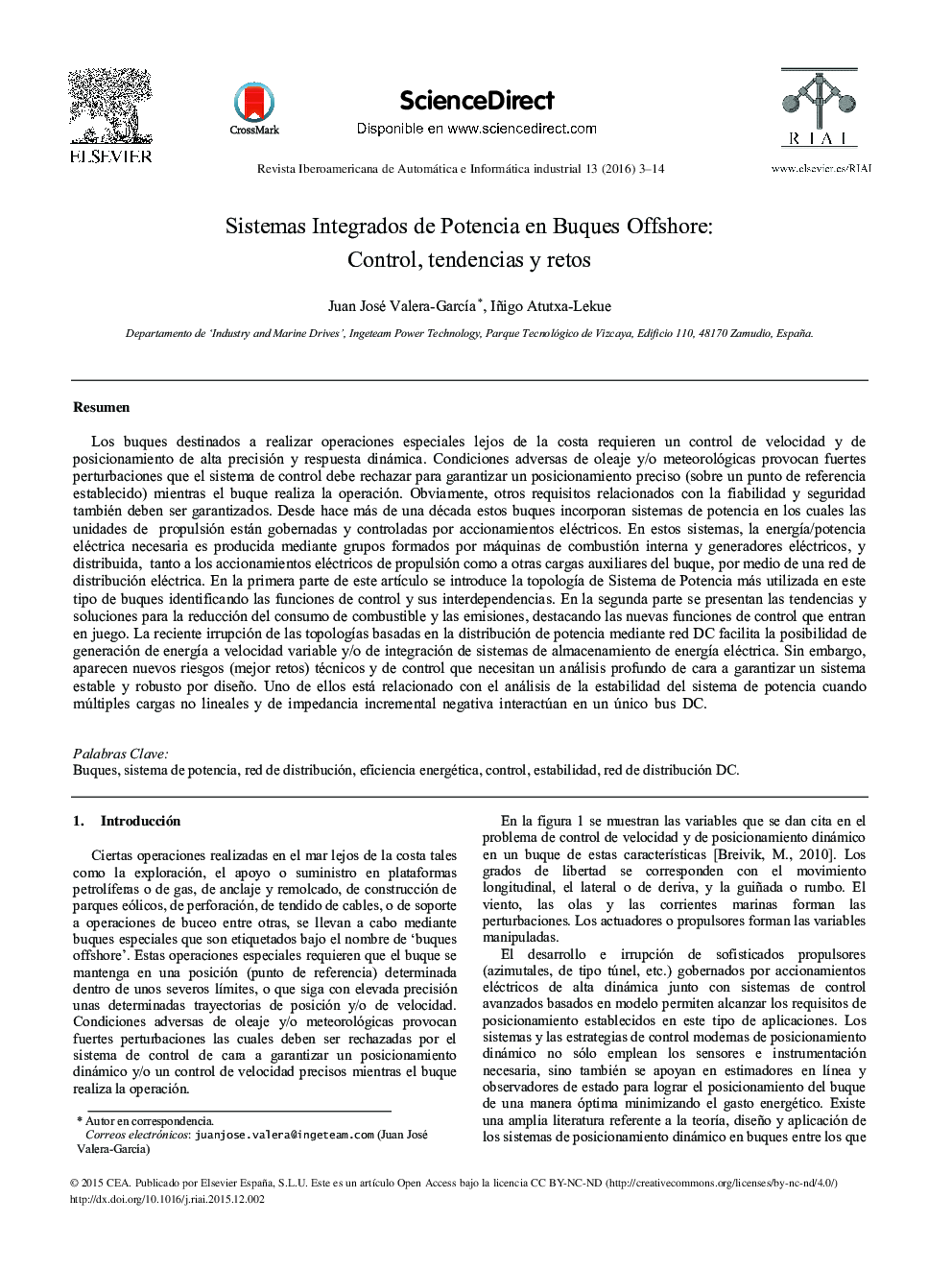| کد مقاله | کد نشریه | سال انتشار | مقاله انگلیسی | نسخه تمام متن |
|---|---|---|---|---|
| 1701767 | 1012294 | 2016 | 12 صفحه PDF | دانلود رایگان |
ResumenLos buques destinados a realizar operaciones especiales lejos de la costa requieren un control de velocidad y de posicionamiento de alta precisión y respuesta dinámica. Condiciones adversas de oleaje y/o meteorológicas provocan fuertes perturbaciones que el sistema de control debe rechazar para garantizar un posicionamiento preciso (sobre un punto de referencia establecido) mientras el buque realiza la operación. Obviamente, otros requisitos relacionados con la fiabilidad y seguridad también deben ser garantizados. Desde hace más de una década estos buques incorporan sistemas de potencia en los cuales las unidades de propulsión están gobernadas y controladas por accionamientos eléctricos. En estos sistemas, la energía/potencia eléctrica necesaria es producida mediante grupos formados por máquinas de combustión interna y generadores eléctricos, y distribuida, tanto a los accionamientos eléctricos de propulsión como a otras cargas auxiliares del buque, por medio de una red de distribución eléctrica. En la primera parte de este artículo se introduce la topología de Sistema de Potencia más utilizada en este tipo de buques identificando las funciones de control y sus interdependencias. En la segunda parte se presentan las tendencias y soluciones para la reducción del consumo de combustible y las emisiones, destacando las nuevas funciones de control que entran en juego. La reciente irrupción de las topologías basadas en la distribución de potencia mediante red DC facilita la posibilidad de generación de energía a velocidad variable y/o de integración de sistemas de almacenamiento de energía eléctrica. Sin embargo, aparecen nuevos riesgos (mejor retos) técnicos y de control que necesitan un análisis profundo de cara a garantizar un sistema estable y robusto por diseño. Uno de ellos está relacionado con el análisis de la estabilidad del sistema de potencia cuando múltiples cargas no lineales y de impedancia incremental negativa interactúan en un único bus DC.
The offshore vessels require a high precision speed control and dynamic positioning. Adverse weather conditions and/or rough waves give rise to high disturbances that must be rejected by the control system to keep the vessel position in the area or station where the vessel operation is being executed. Other requirements related to the safety, reliability and robustness must be obviously ensured. Since more than a decade the power system of this kind of vessels is based on a diesel-electric power plant where the propellers and thruster units are controlled by electrical drives. In this power system the required electrical energy/power is generated through diesel gensets, and distributed to the propulsion drives (and to the rest of vessel utility loads) through a power grid. In this work the most commonly used integrated power system architecture is first introduced thus identifying the control functions and their interdependencies. Some trends and new power system topologies to improve the energy efficiency are then also presented and described. The emergence of new solutions based on DC grids allows the diesel gensets to operate at variable speed and makes the integration of the energy storage systems or even some renewable energy systems easier. However, they present some technical and design challenges in order to ensure a stable and robust solution by design. One of them is related to the stability analysis of the DC grid when multiple nonlinear constant power loads (negative impedance) are connected and thus interacting on the same DC bus.
Journal: Revista Iberoamericana de Automática e Informática Industrial RIAI - Volume 13, Issue 1, January–March 2016, Pages 3–14
